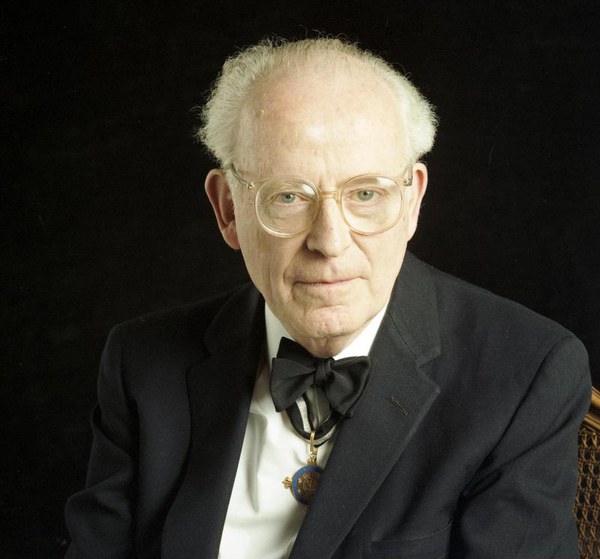Ernst Kitzinger, a professor of Byzantine and medieval art history at Harvard University, was long associated with Dumbarton Oaks, where he began as a junior fellow during the institution’s first academic year, 1941–42. He frequently participated in Dumbarton Oaks symposia and contributed to its publications. Beginning in 1946, he received successive academic appointments at Dumbarton Oaks, leading to a professorship of Byzantine art history. He later served for eleven years, beginning in 1955, as director of Byzantine Studies. In his obituary notice for Kitzinger in Dumbarton Oaks Papers57 (2003), Henry Maguire asserted that, “more than any other person, [Ernst Kitzinger] was responsible for creating at Dumbarton Oaks the world’s foremost institution for the study of Byzantium.”
In 1962, when the studies programs at Dumbarton Oaks were first officially referred to as “Centers,” Kitzinger published a paper titled “The Dumbarton Oaks Center for Byzantine Studies.” The following are extracts from that paper:
Dumbarton Oaks is a large estate in Georgetown, an eighteenth-century town which has long since become part of the city of Washington, D. C. Formerly owned by Mr. and Mrs. Robert Woods Bliss, the estate, with its large house, its gardens, its collection of Byzantine art objects and its library was given to Harvard University in 1940. The terms of the gift specified that the Dumbarton Oaks Research Library and Collection was to be a center of scholarship
in the Byzantine and mediaeval humanities.The collection is dedicated primarily to the minor arts and is particularly strong in jewelry, silver and other metalwork, ivories and textiles. It also includes large and comprehensive holdings of Byzantine coins and seals (ca. 10 000 each). The library has grown from a nucleus of about 14 000 volumes, mostly on art and archaeology, which had been assembled by Mr. and Mrs. Bliss, to a present total of about 60 000. . . . There has been particular emphasis on the acquisition of texts and of complete sets of periodicals. Other research tools are a card index listing every title in the bibliographies of the “Byzantinische Zeitschrift” and of Krumbacher’s Geschichte der byzantinischen Literatur (arranged by authors, with a second copy gradually being developed into a comprehensive subject index), a photographic copy of the Princeton Index of Christian Art, a steadily expanding file of photographs of works of early Christian, Byzantine and mediaeval art and architecture, and, distinct from this, a Census of objects of early Christian and Byzantine art in the United States and Canada, comprising photographs and descriptive data. Within its special field the Dumbarton Oaks Byzantine Center offers to the student what are undoubtedly the most complete and comprehensive facilities in the world today.
The Center’s primary function is research. Though administratively part of Harvard, it is separated from the mother institution by a physical distance of four hundred miles, and cannot combine research with instruction in the normal manner of university institutes. . . . It was staffed with its own permanent faculty at present consisting of eight scholars, who between them represent the fields of art and archaeology, history, literature and theology. The group is supplemented each year by a small number of Visiting Scholars, temporarily invited, and by others who hold special appointments. Dumbarton Oaks seeks to contribute to the raising of a new generation of Byzantinists through lending members of its faculty to Harvard and other institutions for occasional terms of teaching, and, more regularly, through a fellowship program, under which advanced graduate and postdoctoral students are enabled to spend periods, normally of one or two years, at the library in pursuit of their work. But the core of the Center’s activities is research, discussion, and publication.
It is an aim of historical studies in our time to achieve an integrated picture of the past, to view together the political, social, intellectual, aesthetic and spiritual forces that shaped it and to understand their interaction. The Dumbarton Oaks Center for Byzantine Studies has set itself this task for one particular civilization. In a sense its work is a test tube experiment in modern Kulturgeschichte, carried out under exceptionally favorable conditions. . . . The aim of Dumbarton Oaks . . . is to study Byzantine civilization not only in itself but also in its mediaeval context. It seeks to promote the understanding of the Middle Ages by placing proper emphasis on what was in terms of the mediaeval world itself a hub of political and cultural life.



